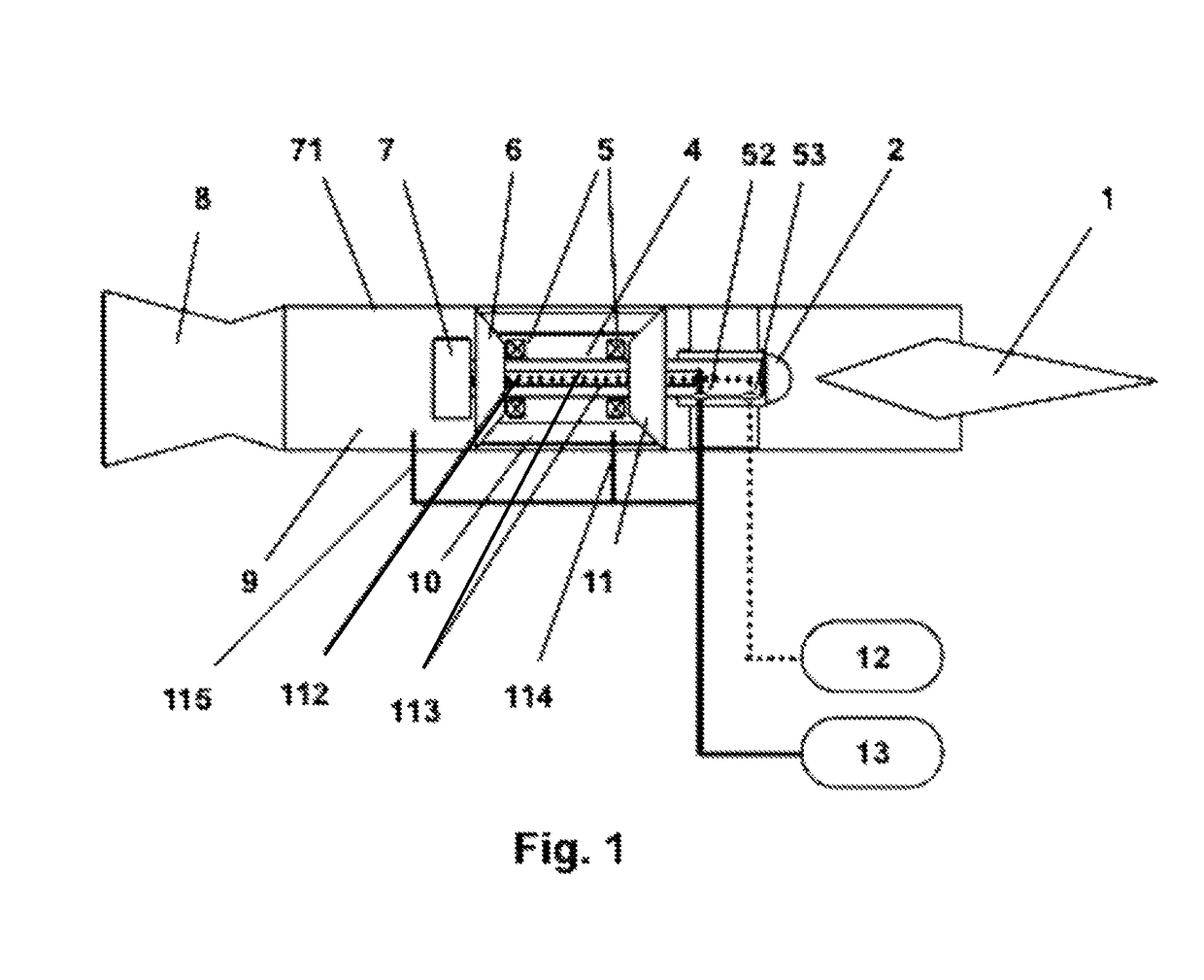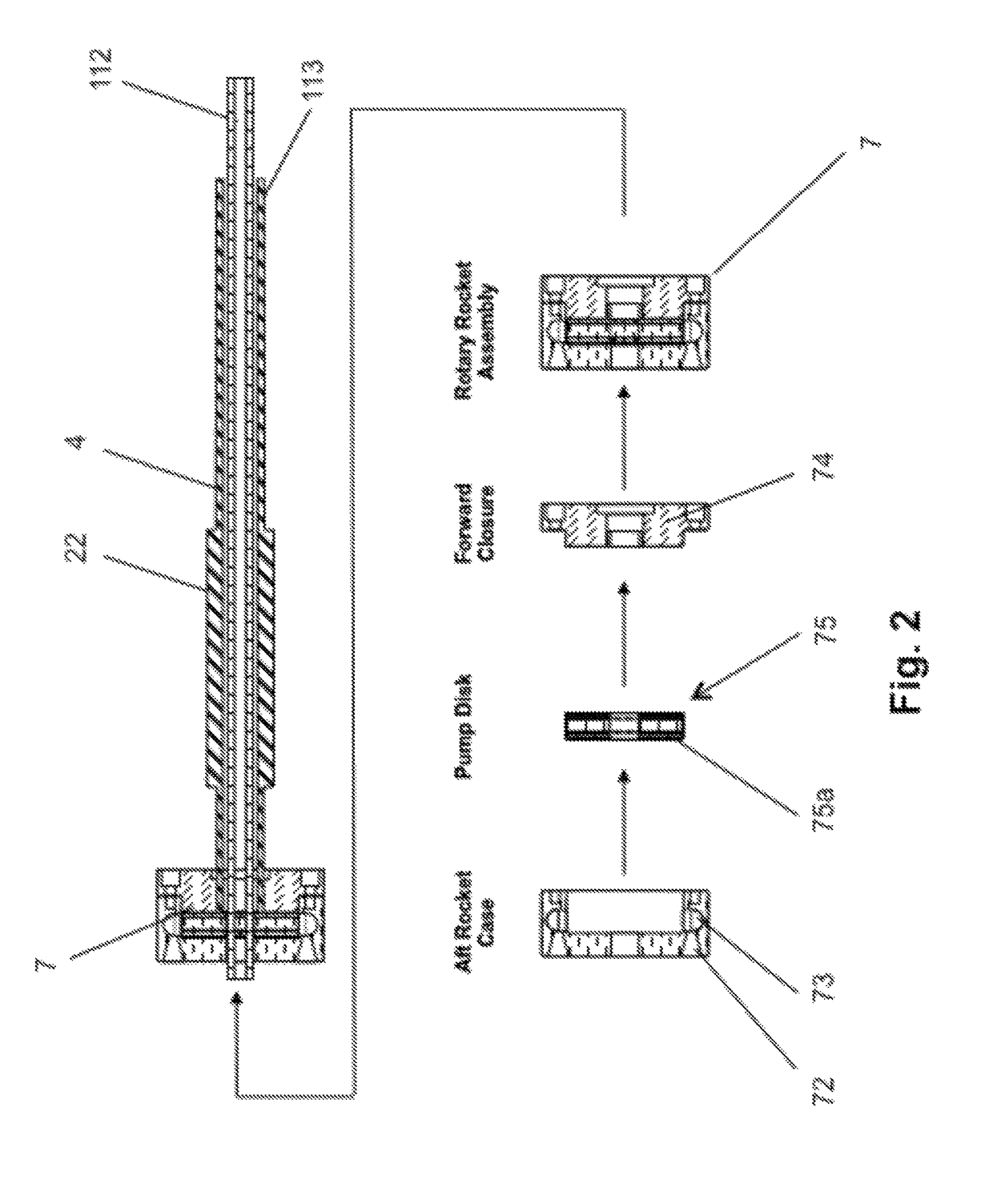Rotary turbo rocket
a rotary turbo rocket and turbojet technology, which is applied in the field of turbojet combined with rotary rockets, can solve the problems of high propellant consumption rate, inability to operate outside the atmosphere, and increase the complexity and mass of the overall engine, so as to alleviate or eliminate one or more deficiencies, disadvantages, and the effect of reducing the number o
- Summary
- Abstract
- Description
- Claims
- Application Information
AI Technical Summary
Benefits of technology
Problems solved by technology
Method used
Image
Examples
Embodiment Construction
[0019]Specific embodiments of the invention now will be described with reference to the accompanying drawings. This invention may, however, be embodied in many different forms and should not be construed as limited to the embodiments set forth herein; rather, these embodiments are provided so that this disclosure will be thorough and complete, and will fully convey the scope of the invention to those skilled in the art. The terminology used in the detailed description of the embodiments illustrated in the accompanying drawings is not intended to be limiting of the invention. In the drawings, like numbers refer to like elements.
[0020]FIG. 1 illustrates the basic configuration of one embodiment of a Rotary Turbo Rocket (RTR) comprising a turbojet and a rotary rocket 7 contained in an outer casing 71. The turbojet comprises a compressor 11, a combustion chamber 10, turbine 6, and bearings 5. The rotary rocket 7 is positioned aft of (behind) the turbojet. The compressor 11, turbine 6, b...
PUM
 Login to View More
Login to View More Abstract
Description
Claims
Application Information
 Login to View More
Login to View More - R&D
- Intellectual Property
- Life Sciences
- Materials
- Tech Scout
- Unparalleled Data Quality
- Higher Quality Content
- 60% Fewer Hallucinations
Browse by: Latest US Patents, China's latest patents, Technical Efficacy Thesaurus, Application Domain, Technology Topic, Popular Technical Reports.
© 2025 PatSnap. All rights reserved.Legal|Privacy policy|Modern Slavery Act Transparency Statement|Sitemap|About US| Contact US: help@patsnap.com



